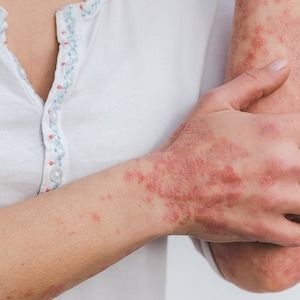Study Reveals Key Insights on 5-Year Retention Rate, Efficacy of Secukinumab for Psoriasis Patients
The multi-center study led to several important findings, one of which being that history of biologic-use could be a factor of importance in secukinumab retention prediction.

Psoriasis patients in Japan using secukinumab had a retention rate of 78.0% at 52 weeks, according to new findings, and ‘insufficient response’ was the principal reason for discontinuation. A history of biologic use was also linked to discontinuation of secukinumab.1
These findings were some of the conclusions reached by a recent multicenter study assessing the real-world retention rate and efficacy of secukinumab for individuals in Japan with psoriasis. The research was authored by Asako Itakura, from the Immunology, Hepatology & Dermatology Medical Franchise Department at Novartis Pharma K.K. in Tokyo.
Itakura and colleagues noted that most of the Japanese real-world research into the retention of this treatment among those with psoriasis have been single-center, so the team sought a broader, multicenter study that could pinpoint those who stand to gain from treatment.2
“RAILWAY (Retention and Effectiveness of Secukinumab in Psoriasis Patients in a Real World Setting: A Multi-Center Cohort Study in Japan) was therefore conducted to investigate the retention rate of secukinumab and its effectiveness in patients with psoriasis in Japan,” Itakura and colleagues wrote.
Background and Findings
The investigators conducted the RAILWAY study across several different centers located in Japan, with medical records retrospectively reviewed for those with psoriasis who were given treatment with secukinumab. The team’s data collection period took place from November of 2020 to September of 2021.
Seven institutions had been chosen by the investigators for biologic treatment, and they were endorsed by the Japanese Dermatological Association. They were selected based upon data collection feasibility as well as commitment to the study's goal of assessing retention rates and the drug’s influencing factors.
The research team’s criteria for inclusion were that those involved had to have been aged 20 and above, have a psoriasis vulgaris diagnosis with or without PsA, and were being given or had been given their treatment in line with Japan's package insert.
To address potential bias, recruitment of patients from any center was capped by the investigators at ≤30%, and those initiating treatment earlier within each center were included irrespective of duration of treatment.
Those who began treatment with secukinumab past the time of the regulatory approval date in 2014 and whose index date was shown to be >52 weeks prior to informed consent date were considered by the research team. The team noted that those with less than 2 follow-up meetings at centers following their initiation were excluded.
The investigators determined their primary endpoint to be week 52 secukinumab retention rates, and that their secondary endpoints would include retention rates at prior times up to year 5, elements influencing retention, and response to treatment.
They also recorded baseline characteristics of patients, which included psoriasis history, demographics, C-reactive protein levels, previous treatments, comorbidities, Psoriasis Area and The team also gathered data on Initial and last treatment dates, discontinuation reasons, and dates.
The investigators’ analysis ended up centering on 123 individuals with psoriasis, and by 52 weeks, 27 of them had discontinued their treatment. This led to a total retention rate of 78.0% (with a 95% confidence interval of 69.6 – 84.4) at this time. When looking at PASI scores, the team found that baseline mean ± standard deviation PASI score was shown to be 9.21 ± 7.37, and by week 52, it had lowered to 1.4 ± 2.6.
The investigators reported that the main reason for patient discontinuation was shown to be ‘insufficient response,’ and the team suggested there was a substantial link between discontinuation of treatment and a history of biologics, demonstrated by a hazard ratio of 1.72 (with a p-value of 0.018).
“History of biologics use may be an important factor in predicting secukinumab retention,” they wrote. “More large-scale studies are warranted to further understand the factors influencing drug retention and effectiveness.”
References
- Tada, Y, Morita, A, Yamanaka, K, Kono, M, Imafuku, S, Okubo, Y, et al. Real-world retention rates and effectiveness of secukinumab in psoriasis: Results from a multicenter cohort study (RAILWAY). J Dermatol. 2023; 00: 1–12. https://doi.org/10.1111/1346-8138.16926.
- Momose M, Asahina A, Umezawa Y, Nakagawa H. Long-term clinical efficacy and safety of secukinumab for Japanese patients with psoriasis: a single-center experience. J Dermatol. 2018; 45: 318–321.